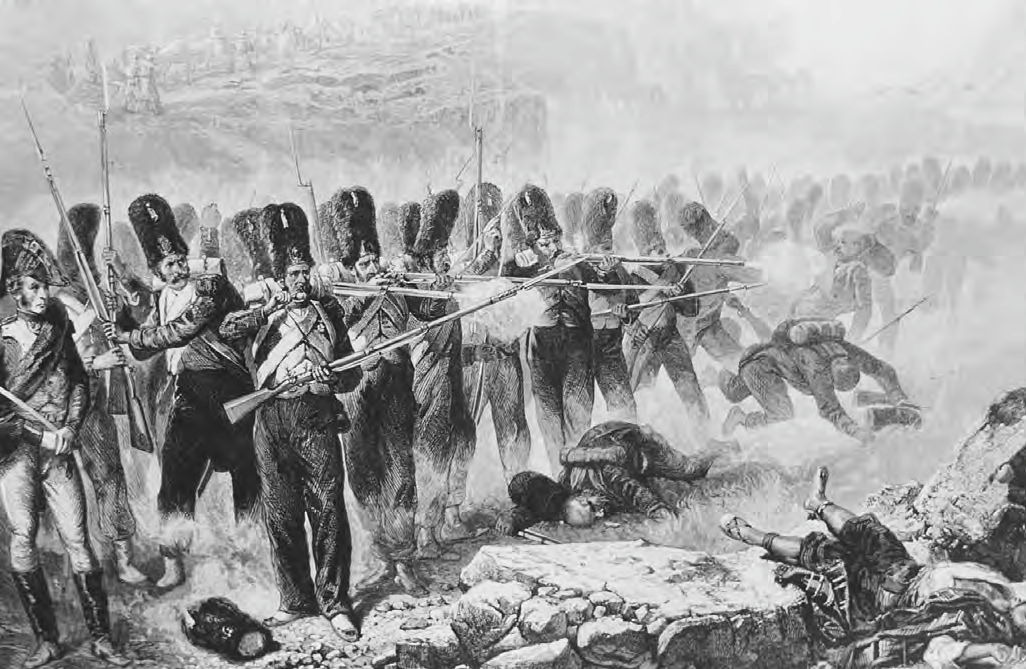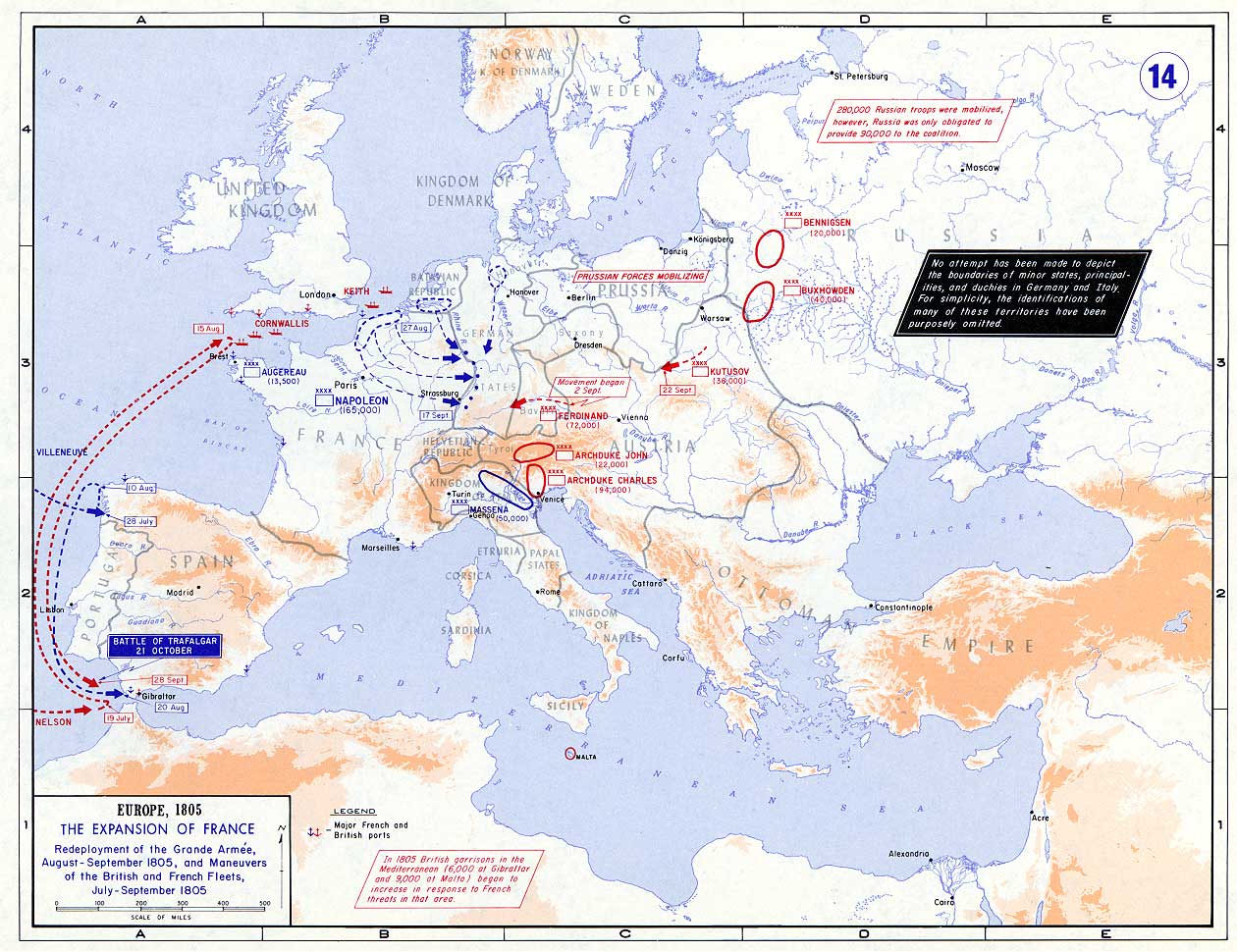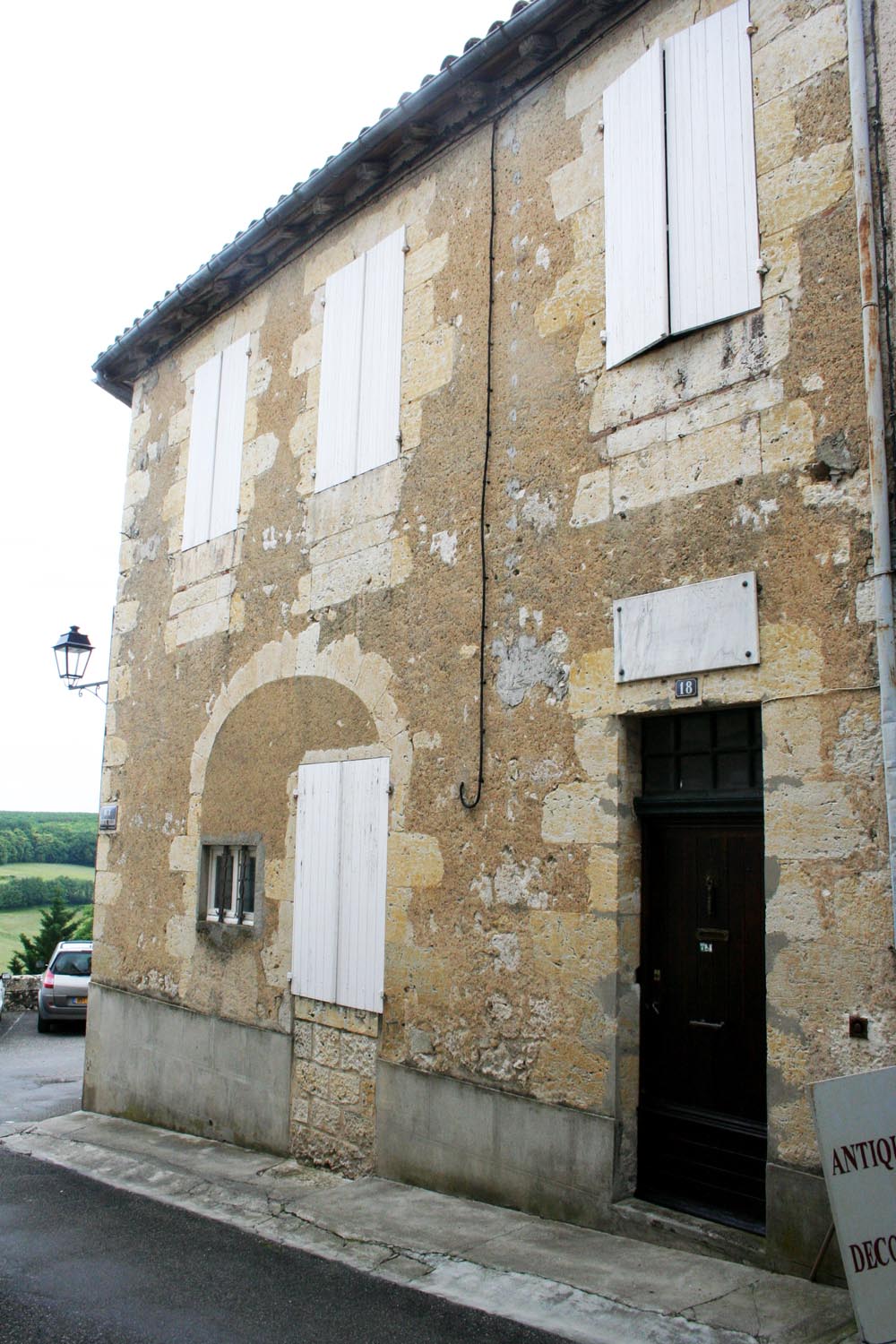|
Claude-Étienne Michel
General Claude-Étienne Michel (3 October 1772 – 18 June 1815), an officer in Napoleon's army, eventually rose to second in command of the Chasseur Division of the Imperial Guard and commander of the Brigade of the Middle Guard. He may actually be the officer who uttered the words often attributed to Pierre Cambronne "'' La Garde meurt et ne se rend pas''" "The Guard dies, and does not surrender".D.H. Parry (c. 1900) ''Battle of the nineteenth century'', Vol 1 Cassell and Company: LondonWaterloo Life Michel was born in Pointre in the Jura, the son of a surgeon. Revolutionary Wars During the French Revolution and the surrounding War of the First Coalition he enlisted in the '6th battalion of volunteers from the Jura department' on 1 October 1791. He was a Sergeant Major by the 15th of the month and promoted to Sous-Lieutenant on March 4, 1792. then Lieutenant on the 22 August 1792, and was made a Captain on October 6, 1792 a rapid rise in a year. During this year he was d ... [...More Info...] [...Related Items...] OR: [Wikipedia] [Google] [Baidu] |
War Of The Second Coalition
The War of the Second Coalition () (1798/9 – 1801/2, depending on periodisation) was the second war targeting French Revolution, revolutionary French First Republic, France by many European monarchies, led by Kingdom of Great Britain, Britain, Habsburg monarchy, Austria, and Russian Empire, Russia and including the Ottoman Empire, History of Portugal (1777–1834), Portugal, Kingdom of Naples, Naples and various German monarchies. Prussia did not join the coalition, while History of Spain (1700-1808), Spain supported France. The overall goal of Britain and Russia was to contain the expansion of the French Republic and to restore the monarchy in France, while Austriaweakened and in deep financial debt from the War of the First Coalitionsought primarily to recover its position and come out of the war stronger than when it had entered. The first half of the war saw the Coalition manage to drive the French back in Italy, Germany, and Holland, but they were not able to seriously t ... [...More Info...] [...Related Items...] OR: [Wikipedia] [Google] [Baidu] |
Commissariat
A commissariat is a department or organization commanded by a commissary or by a corps of commissaries. In many countries, commissary is a police rank. In those countries, a commissariat is a police station commanded by a commissary. In some armies, commissaries are logistic officers. In those countries, a commissariat is a department charged with the provision of supplies, both food and forage, for the troops. The supply of military stores such as ammunition is not included in the duties of a commissariat. In almost every army the duties of transport and supply are performed by the same corps of departmental troops. British Army 17th century When James II of England, James II mustered an army on Hounslow Heath in 1685, he appointed a certain John Shales as Commissary General of provisions, responsible for sourcing, storing and issuing food for the troops and forage for the horses. In addition he was to license and regulate sutlers, to procure wagons, carriages, horses and driv ... [...More Info...] [...Related Items...] OR: [Wikipedia] [Google] [Baidu] |
Jean Philibert Maret
Jean may refer to: People * Jean (female given name) * Jean (male given name) * Jean (surname) Fictional characters * Jean Grey, a Marvel Comics character * Jean Valjean, fictional character in novel ''Les Misérables'' and its adaptations * Jean Pierre Polnareff, a fictional character from ''JoJo's Bizarre Adventure'' * Jean Luc Picard, fictional character from ''Star Trek Next Generation'' Places * Jean, Nevada, United States; a town * Jean, Oregon, United States Entertainment * Jean (dog), a female collie in silent films * "Jean" (song) (1969), by Rod McKuen, also recorded by Oliver * ''Jean Seberg'' (musical), a 1983 musical by Marvin Hamlisch Other uses * JEAN (programming language) * USS ''Jean'' (ID-1308), American cargo ship c. 1918 * Sternwheeler Jean, a 1938 paddleboat of the Willamette River See also *Jehan * * Gene (other) * Jeanne (other) * Jehanne (other) * Jeans (other) * John (other) John is a common Eng ... [...More Info...] [...Related Items...] OR: [Wikipedia] [Google] [Baidu] |
Old Guard (France)
The Old Guard () was a formation of the French Imperial Army (1804–1815), French Imperial Army's Imperial Guard (Napoleon I), Imperial Guard. Consisting exclusively of veteran troops, it was the most prestigious formation in Napoleon's ''Grande Armée''. French soldiers often referred to Napoleon's Old Guard as "the Immortals". Famously devoted to the Emperor, who even referred to them as "my children"; the members of his Old Guard were selected based on physical traits, most notably above-average height. Their imposing stature was likely impressive to foes and allies alike. Awards as well as veterancy were also taken into consideration when selecting troops for the Old Guard. Infantry There were four regiments of the Old Guard infantry: 1st and 2nd each of grenadier, grenadiers and chasseur, chasseurs. Members of the Old Guard benefitted from a number of different privileges, including considerably increased wages from the Imperial Guard. Requirements for Old Guard Soldiers ... [...More Info...] [...Related Items...] OR: [Wikipedia] [Google] [Baidu] |
Battle Of Austerlitz
The Battle of Austerlitz (2 December 1805/11 Frimaire An XIV French Republican calendar, FRC), also known as the Battle of the Three Emperors, was one of the most important military engagements of the Napoleonic Wars. The battle occurred near the town of Slavkov u Brna, Austerlitz in the Austrian Empire (now Slavkov u Brna in the Czech Republic). Around 158,000 troops were involved, of which around 24,000 were killed or wounded. The battle is often cited by military historians as one of Napoleon's tactical masterpieces, in the same league as other historic engagements like Hannibal's Battle of Cannae, Cannae (216 BC) or Alexander the Great's Battle of Gaugamela, Gaugamela (331 BC).Byron Farwell, Farwell p. 64. "Austerlitz is generally regarded as one of Napoleon's tactical masterpieces and has been ranked as the equal of Arbela, Cannae, and Leuthen."Trevor N. Dupuy, Dupuy p. 102 Note: Dupuy was not afraid of expressing an opinion, and he classified some of his subjects as Great ... [...More Info...] [...Related Items...] OR: [Wikipedia] [Google] [Baidu] |
War Of The Third Coalition
The War of the Third Coalition () was a European conflict lasting from 1805 to 1806 and was the first conflict of the Napoleonic Wars. During the war, First French Empire, France and French client republic, its client states under Napoleon I and its ally Spain opposed an alliance, the Third Coalition, which was made up of the United Kingdom of Great Britain and Ireland, United Kingdom, the Austrian Empire, the Russian Empire, Kingdom of Naples, Naples, Kingdom of Sicily, Sicily, and Sweden. Kingdom of Prussia, Prussia remained neutral during the war. Britain had already been at war with France following the breakdown of the Treaty of Amiens, Peace of Amiens and remained the only country still at war with France after the Treaty of Pressburg (1805), Treaty of Pressburg. From 1803 to 1805, Britain stood under constant threat of a Napoleon's planned invasion of the United Kingdom, French invasion. The Royal Navy, however, assured its naval dominance at the Battle of Trafalgar in Oc ... [...More Info...] [...Related Items...] OR: [Wikipedia] [Google] [Baidu] |
Grande Armée
The (; ) was the primary field army of the French Imperial Army (1804–1815), French Imperial Army during the Napoleonic Wars. Commanded by Napoleon, from 1804 to 1808 it won a series of military victories that allowed the First French Empire to exercise unprecedented control over most of Europe. Widely acknowledged to be one of the greatest fighting forces ever assembled, it suffered catastrophic losses during the disastrous French invasion of Russia, after which it never recovered its strategic superiority and ended its military career with a total defeat during the Hundred Days in 1815. The ''Grande Armée'' was formed in 1804 from the Army of the Coasts of the Ocean (1804), Army of the Coasts of the Ocean, a field army of over 100,000 men assembled for Napoleon's planned invasion of the United Kingdom. He subsequently led the field army to Central Europe and defeated Austrian Empire, Austrian and Russian Empire, Russian forces as part of the War of the Third Coalition. T ... [...More Info...] [...Related Items...] OR: [Wikipedia] [Google] [Baidu] |
Jean Lannes
Jean Lannes, 1st Duke of Montebello, Prince of Siewierz (; 10 April 1769 – 31 May 1809), was a French military commander and a Marshal of the Empire who served during both the French Revolutionary and Napoleonic Wars. He was one of Napoleon's most daring and talented generals, and is regarded by many as one of history's greatest military commanders. Napoleon once commented on Lannes: "I found him a pygmy and left him a giant". A personal friend of the emperor, he was allowed to address him with the familiar '' tu'', as opposed to the formal '' vous''. Early life Lannes was born in the small town of Lectoure,Dunn-Pattison, p. 117. in the province of Gascony in Southern France. He was the son of a small landowner and merchant, Jeannet Lannes (1733–1812), son of Jean Lannes (d. 1746), a farmer, and his wife, Jeanne Pomiès (d. 1770), and paternal grandson of Pierre Lane and wife Bernarde Escossio (both died in 1721), and wife Cécile Fouraignan (1741–1799), daughter o ... [...More Info...] [...Related Items...] OR: [Wikipedia] [Google] [Baidu] |
Legion Of Honour
The National Order of the Legion of Honour ( ), formerly the Imperial Order of the Legion of Honour (), is the highest and most prestigious French national order of merit, both military and Civil society, civil. Currently consisting of five classes, it was originally established in 1802 by Napoleon, Napoleon Bonaparte, and it has been retained (with occasional slight alterations) by all later French governments and regimes. The order's motto is ' ("Honour and Fatherland"); its Seat (legal entity), seat is the Palais de la Légion d'Honneur next to the Musée d'Orsay, on the left bank of the Seine in Paris. Since 1 February 2023, the Order's grand chancellor has been retired General François Lecointre, who succeeded fellow retired General Benoît Puga in office. The order is divided into five degrees of increasing distinction: ' (Knight), ' (Officer), ' (Commander (order), Commander), ' (Grand Officer) and ' (Grand Cross). History Consulate During the French Revolution, all ... [...More Info...] [...Related Items...] OR: [Wikipedia] [Google] [Baidu] |
Ranks In The French Army
Rank insignia in the French Army are worn on the sleeve or on shoulder marks of uniforms, and range up to the highest rank of Marshal of France, a state honour denoted with a seven-star insignia that was last conferred posthumously on Marie Pierre Koenig in 1984. Infantry arms and cavalry arms Rank insignia in the French army depend on whether the soldier belongs to an infantry or cavalry unit. The infantry arms () include normal infantry, naval troops, the Foreign Legion and engineers; cavalry arms () include armoured cavalry, artillery, maintenance and logistics. Sleeves are emblazoned with marks denoting either gold insignia for the infantry or silver/white for the cavalry. However, the artillery uses gold as the main colour, despite being a cavalry branch, and spahis use gold as the main colour despite being part of the cavalry, a distinction representing the armoured cavalry. Marshal The title of "marshal of France" () is awarded as a distinction, rather than a rank. ... [...More Info...] [...Related Items...] OR: [Wikipedia] [Google] [Baidu] |
Saint-Domingue
Saint-Domingue () was a French colonization of the Americas, French colony in the western portion of the Caribbean island of Hispaniola, in the area of modern-day Haiti, from 1659 to 1803. The name derives from the Spanish main city on the island, Santo Domingo, which came to refer specifically to the Spanish-held Captaincy General of Santo Domingo, now the Dominican Republic. The borders between the two were fluid and changed over time until they were finally solidified in the Dominican War of Independence in 1844. The French had established themselves on the western portion of the islands of Hispaniola and Tortuga (Haiti), Tortuga thanks to the Devastations of Osorio. In the Treaty of Ryswick of 1697, Spain formally recognized French control of Tortuga Island and the western third of the island of Hispaniola. In 1791, slaves and some Saint-Domingue Creoles, Creoles took part in a Haitian Vodou, Vodou ceremony at Bois Caïman and planned the Haitian Revolution. The slave rebe ... [...More Info...] [...Related Items...] OR: [Wikipedia] [Google] [Baidu] |





